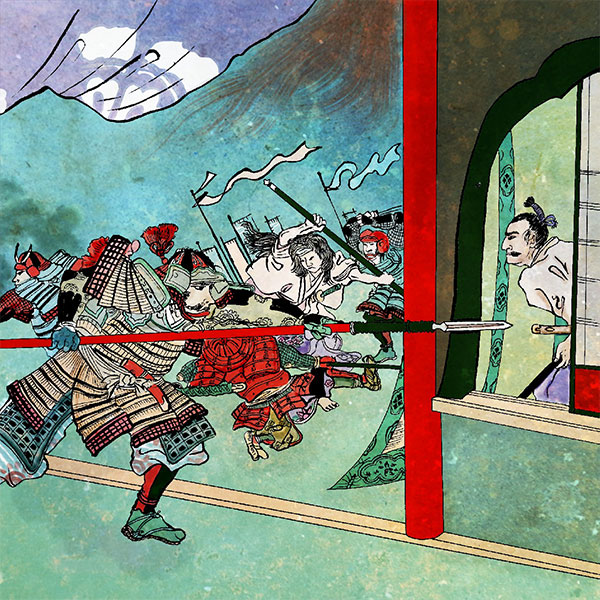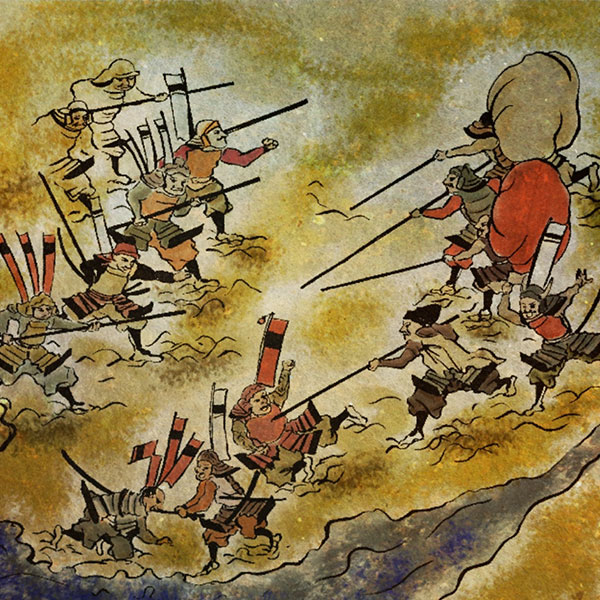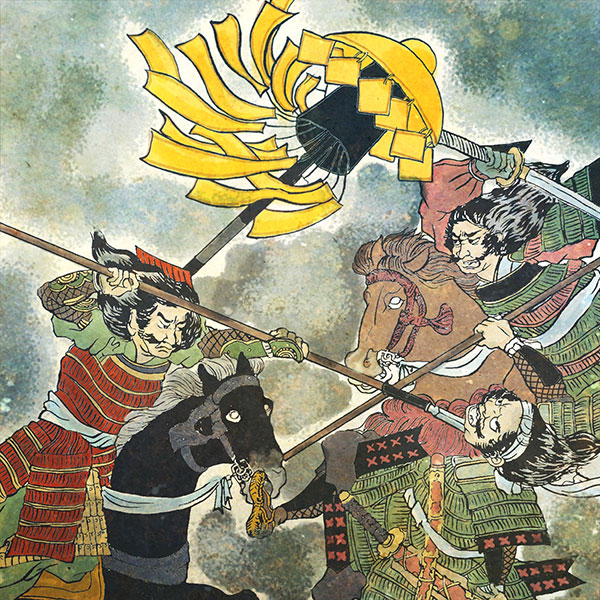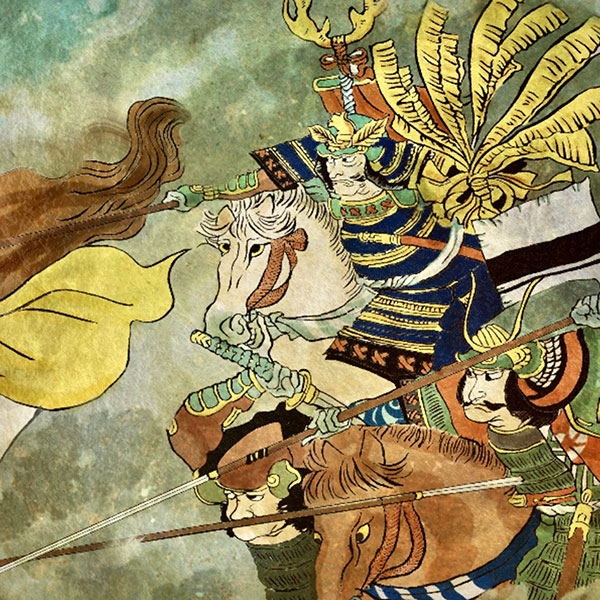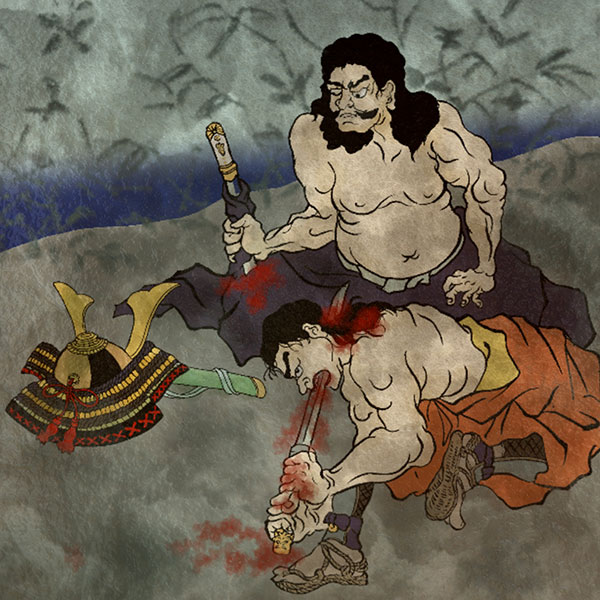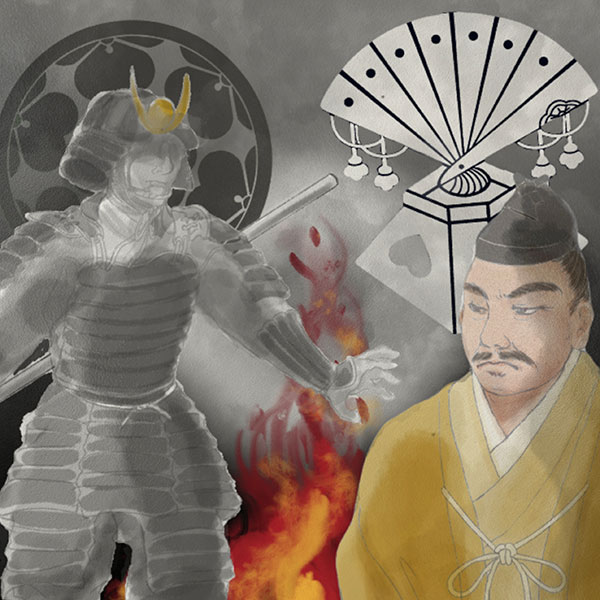Mitsuhide Akechi (1/2)One of the wisest generals in the Sengoku period
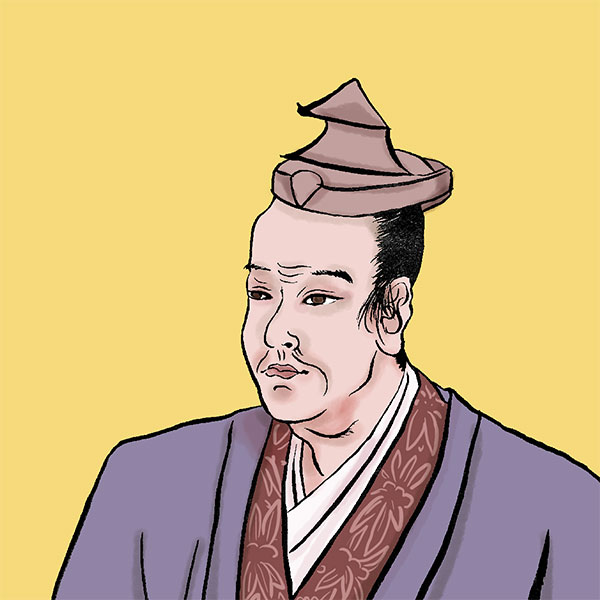
Mitsuhide Akechi
- Article category
- biography
- name
- Akechi Mitsuhide (1528-1582)
- place of birth
- Gifu Prefecture
- Related castles, temples and shrines

Fukuchiyama Castle
- related incident
During the Sengoku period, the military commanders who left their names in history as Sengoku daimyo included military commanders with a variety of abilities, including those with good physiques, those with outstanding military exploits, those with excellent intelligence, and those with a talent for building castles. There was. Akechi Mitsuhide was a military commander who was especially intelligent, had connections with the imperial court and court nobles, and was gifted with renga and tea ceremony skills. What was the life of Akechi Mitsuhide, who caused the Honnoji Incident and is said to be a rebel?
Mysterious birth to adolescence
The year in which Mitsuhide Akechi was born is not known from highly reliable contemporary historical sources. Two theories are said to be most likely based on later historical materials: the first year of the Kyoroku era (1528), based on the Akechi Gunki, and the 13th year of the Eisho era (1516), based on the Todaiki.
As for his birthplace, in "Akechi Gunki" it is said to be Akechi Castle in Akechi-sho, Mino Province (currently Kani City, Gifu Prefecture), and it seems to be true that he was born around Mino Province (southern Gifu Prefecture). According to folklore that remains in Echizen Province, Mitsuhide is said to have lived in the small aza ``Bonojo'' in Tochiizumi-cho around Ichijodani with his mother during his childhood, and that Mitsuhide split wood in the small aza ``Nishiwa'' in the same town. There is also a tradition that remains. There is also another theory that says he was born in Omi.
Similarly, there are many unknowns about his adolescence; in general, Mitsuhide belonged to the Toki clan, the shugo of Mino Province, and in "Akechi Gunki", it is said that Mitsuhide was a member of the Toki clan, the shugo of Mino Province, and that Dosan Saito, who replaced the Toki clan as the lord of Mino Province, was a member of the Toki clan. However, in 1556, in the battle between Dosan and Yoshitatsu's father and son (Battle of the Nagara River), Yoshitatsu attacked Akechi Castle and the family was separated. .
After that, it is said that Mitsuhide relied on Yoshikage Asakura in Echizen Province and served him for 10 years, living in front of the gates of Shonenji Temple in Nagasaki.
Mitsuhide and Yoshiaki Ashikaga
In September 1566, Yoshiaki Ashikaga came to Tsuruga with the help of the Asakura family. After spending some time here, in November 1567, he moved to Anyoji Temple in Ichijodani (present-day Fukui City, Fukui Prefecture), the home base of the Asakura clan, and on April 15, 1567. I celebrated my New Year's wedding.
At that time, Mitsuhide is said to have lived in Todaami, 3 km away from Anyoji Temple. Yoshiaki, who wanted to reconsider the Muromachi Shogunate, asked for assistance from Sengoku warlords in various regions, and he turned to Yoshikage Asakura, so Mitsuhide came into contact with Yoshiaki at this point.
However, even though Yoshiaki urges him to go to Kyoto, Yoshikage Asakura shows no signs of moving. Mitsuhide advises Nobunaga, saying, ``Yoshikage is unreliable. Let's rely on Oda Nobunaga.''
On June 23, 1568, Yoshiaki requested Nobunaga, who had captured Mino from the Saito clan, to come to Kyoto and appoint him as the Seii Taishogun through Mitsuhide.
Around July, Nobunaga, who had annexed Mino Province and captured Northern Ise, asked Yoshiaki to accompany him to Kyoto, so Yoshiaki left Echizen and arrived in Gifu, Mino Province on July 22 of the same year.
From Yoshiaki Ashikaga to Oda Nobunaga's vassal
Akechi Mitsuhide joined Yoshiaki Ashikaga in Kyoto in September 1568. The following year, on January 5, 1569, the Miyoshi Sanninshu raided Honkoku-ji Temple, where Yoshiaki was staying (Honkoku-ji Incident). It is said that Mitsuhide also joined Yoshiaki's defense force (``Nobunaga Koki''). The following month, he began to be involved in issuing documents in Kyoto, and the document issued on February 29th by Mitsuhide, Sadakatsu Murai, and Nikjo Shonin still remains. From around April, along with Hideyoshi Kinoshita (later Hideyoshi Toyotomi), Nagahide Niwa, and Shigemasa Nakagawa, he was in charge of political affairs in and around Kyoto with the vassals under Nobunaga Oda's control, and effectively began to perform the duties of Kyoto magistrate. However, disagreements arose between Nobunaga and Yoshiaki and they clashed. Nobunaga returns to Gifu.
On New Year's Day in the 13th year of Eiroku (1570), Nobunaga announced the Tonochu Goryoku that regulated Yoshiaki's authority, and Yoshiaki stamped a black seal of approval on his sleeve and transformed into Nobunaga.
On January 26th, the court noble Yotsugu Yamashina went to the shogunate's public for New Year's greetings, and Mitsuhide was among them. At this point, Mitsuhide was treated as a servant who directly consulted the shogunate.
On April 28, 1570, when Nobunaga was in crisis due to Azai Nagamasa's betrayal during the Battle of Kanegasaki, Mitsuhide served as the lord alongside Toyotomi Hideyoshi and successfully led the retreat.
In 1571, Ishiyama Hongan-ji Temple raised an army at the same time as the Miyoshi Sanninshu invaded from Shikoku, and Mitsuhide joined Nobunaga and Yoshiaki and marched into Settsu Province. He gradually shifted his focus from being a vassal of Yoshiaki to a vassal of Nobunaga.
Became the Oda family's first castle-owning military commander.
During the burning of Mt. Hiei in September 1571, Akechi Mitsuhide achieved great military success as a member of the main execution force, was given Shiga District (Shiga District: approximately 50,000 koku) in Omi Province, and began construction of Sakamoto Castle. . At this point, we know that Mitsuhide was treated as a vassal of Oda Nobunaga.
Around December, Mitsuhide asked Yoshiaki for time off, saying that he had no future prospects, but his request was denied. It is said that Yoshiaki was relying on Mitsuhide's ingenuity and could not have approved this.
In February 1573, Yoshiaki raised an army against Nobunaga Oda. Mitsuhide separated from Yoshiaki and participated in the battles of Ishiyama Castle and Imagata Castle as Nobunaga's direct vassal.
In July, Yoshiaki raised an army again at Makishima Castle, but was defeated, Yoshiaki was exiled after surrendering, and it is said that the Muromachi Shogunate was effectively destroyed at this point. In the same year, Sakamoto Castle was completed and became his residence.
In July 1573, Sadakatsu Murai became Kyoto Shoshidai, but until the first half of 1575, Mitsuhide also served as a magistrate involved in relieving interests and interests, and was also called ``Ryodaikan'' (joint names). I am publishing a document.
In July 1575, Mitsuhide received the surname of Koretou and was appointed to the rank of Junior Fifth Rank, Lower Hyuga-kami, and became Koretou, Hyuga-kami. This event meant that Mitsuhide was added to the ranks of senior vassals of the Oda clan.
Tanba strategy
In 1575, Akechi Mitsuhide was entrusted with the capture of Tanba Province by Oda Nobunaga. However, Tamba Province was a series of mountains, and the country struggled in the area, which was extremely difficult to control as the country's people divided between them. In addition, the people of Tanba were loyal to Yoshiaki Ashikaga, and with Yoshiaki's expulsion they became enemies.
First, Mitsuhide began a heavy attack on Utsu Yorishige with the cooperation of Eiaki Obata and Katsutsugu Kawa, but midway through, he was ordered by Nobunaga to reinforce the Echizen and Tango fronts and left, and in August, he attacked Utsu Yorishige. They had a tough time, as Umaji Castle and Amarube Castle were attacked by the Oda side.
Mitsuhide once returned to Sakamoto Castle, and in October he began the invasion of Tamba again, with Yorishige Utsu fleeing without a fight, and then Naomasa Akai, who had given up on taking Takeda Castle and returned home, besieged Kuroi Castle.
- related incident

- WriterTomoyo Hazuki(Writer)I have loved history and geography since my student days, and have enjoyed visiting historical sites, temples and shrines, and researching ancient documents. He is especially strong in medieval Japanese history and European history in world history, and has read a wide range of things, including primary sources and historical entertainment novels. There are so many favorite military commanders and castles that I can't name them, but I especially like Hisashi Matsunaga and Mitsuhide Akechi, and when it comes to castles, I like Hikone Castle and Fushimi Castle. Once you start talking about the lives of warlords and the history of castles, there's a side of you that can't stop talking about them.


